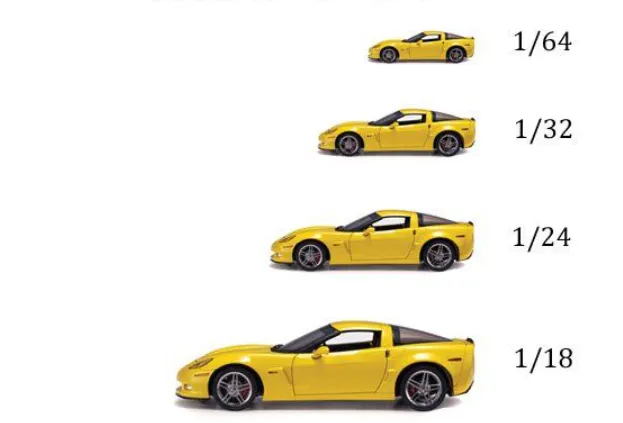Diecast car collecting is a beloved hobby enjoyed by enthusiasts around the globe. But, with so many cars available, understanding the different scales is key to building a satisfying collection. A diecast car scale chart acts as a fundamental tool for collectors, offering a clear understanding of the proportional relationships between the miniature models and their real-life counterparts. This guide will provide you with all you need to know about diecast car scales and how to use a scale chart to enhance your collecting experience. Whether you are new to the hobby or a seasoned collector, a solid grasp of the scale chart is essential.
What is a Diecast Car Scale Chart
A diecast car scale chart is essentially a reference that details the proportional relationship between a miniature car model and its actual, full-size vehicle. The scale is expressed as a ratio, such as 1 18, which means that the model car is 1/18th the size of the original car. This chart is a valuable resource for collectors, helping them to understand the size of a model before purchasing it, plan their display, and compare different models side by side. The chart also provides an easy way to ensure consistency in the collection, keeping all of the models at similar scales for an organized and visually appealing display. A good scale chart will also offer details such as the dimensions of the car and information about popular models.
The Importance of Scale in Diecast Cars
Scale is critically important for diecast car collectors. The scale determines the size of the model car, impacting several aspects of collecting. It affects the details that can be included, the amount of space needed for display, and the overall cost. A larger scale model, such as 1 18, will generally have more detailed features, but will also take up more space and be more expensive. Smaller scales are often more affordable and take up less room, making them ideal for building a large and diverse collection. Scale is also essential for comparative purposes. Knowing the scale of a model allows collectors to compare the size of different cars easily and to understand how accurately the model represents the real car. Image: diecast car scale comparison.
Common Diecast Car Scales

Several scales are prevalent in the diecast car world, each offering a unique set of advantages. These scales cater to different preferences, from the highly detailed models of the larger scales to the compact, space-saving smaller scales. The popularity of a particular scale can vary depending on the type of car, the manufacturer, and the collector’s focus. Understanding the most common scales helps a collector make informed decisions about the types of models they want to collect.
1 64 Scale Cars
1 64 scale cars are among the most popular due to their small size and affordability. These models are roughly 1/64th the size of the real car, making them perfect for collectors with limited space or those who prefer to amass a large collection without taking up much room. They are commonly available and represent a wide variety of vehicles, from classic cars to modern sports cars. The smaller size of these cars also makes them highly accessible, often being available in stores like supermarkets and toy stores, perfect for casual collectors and children. Image: diecast 1 64 scale car.
1 43 Scale Cars
1 43 scale is another popular choice, offering a balance between detail and size. These models are larger than 1 64 scale, allowing for more intricate detailing. They remain relatively compact, however, making them suitable for display in various settings. 1 43 scale cars are often favored by collectors who appreciate a high level of detail but do not want the larger space requirements of bigger scales. They are readily available and cater to a broad range of car types, from race cars to classic automobiles. This scale is often found in hobby shops and specialist stores.
1 24 Scale Cars
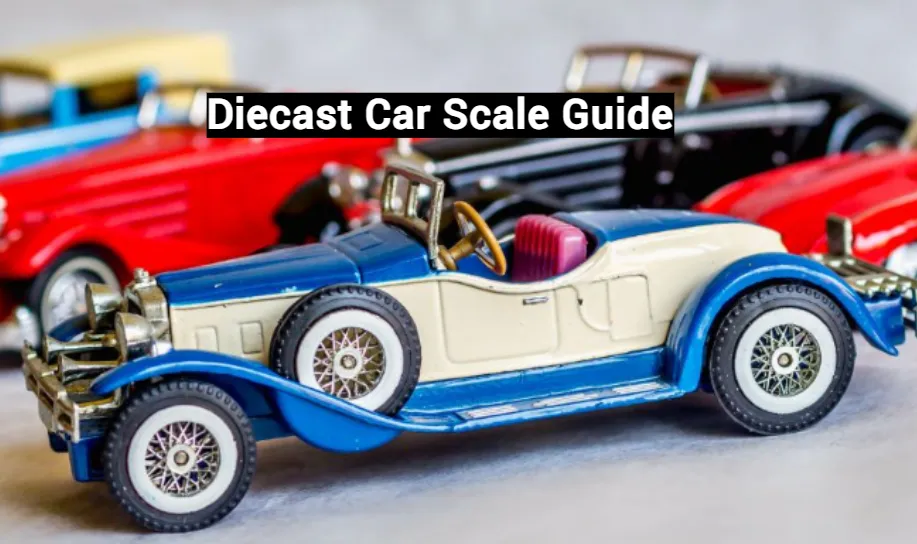
1 24 scale diecast cars offer a significant amount of detail, with a good compromise between size and intricate features. These models are larger than 1 43 scale, which provides ample room for manufacturers to include fine details in the design. The larger size allows for more moving parts, opening doors, hoods, and trunks, enhancing the interactive aspect of collecting. These models are a popular choice for those who want a highly detailed model without the massive size and expense of a 1 18 scale car. You can typically find a good variety of cars in this scale, including many classic and modern vehicles. Image: diecast 1 24 scale car.
1 18 Scale Cars
1 18 scale diecast cars represent the largest scale commonly collected. These models are highly detailed, often featuring incredibly accurate interiors, engine compartments, and chassis. The larger size allows for a more impressive display and enables manufacturers to include the most intricate details. The detail level often includes functional components such as steering and suspension. Collectors who want the most accurate and detailed models often opt for this scale, despite the higher cost and the larger space requirements. These cars make a great centerpiece for any diecast car collection. Image: diecast 1 18 scale car.
Other Diecast Car Scales
While 1 64, 1 43, 1 24, and 1 18 scales are the most popular, several other scales exist, catering to specific interests and collecting preferences. Some less common scales include 1 87, often used for model train layouts, and various other scales tailored to different types of vehicles. These other scales may be chosen by collectors who have specific interests, such as military vehicles, construction vehicles, or trucks. The availability of models in these scales can vary significantly compared to the more common scales.
Factors to Consider When Choosing a Scale
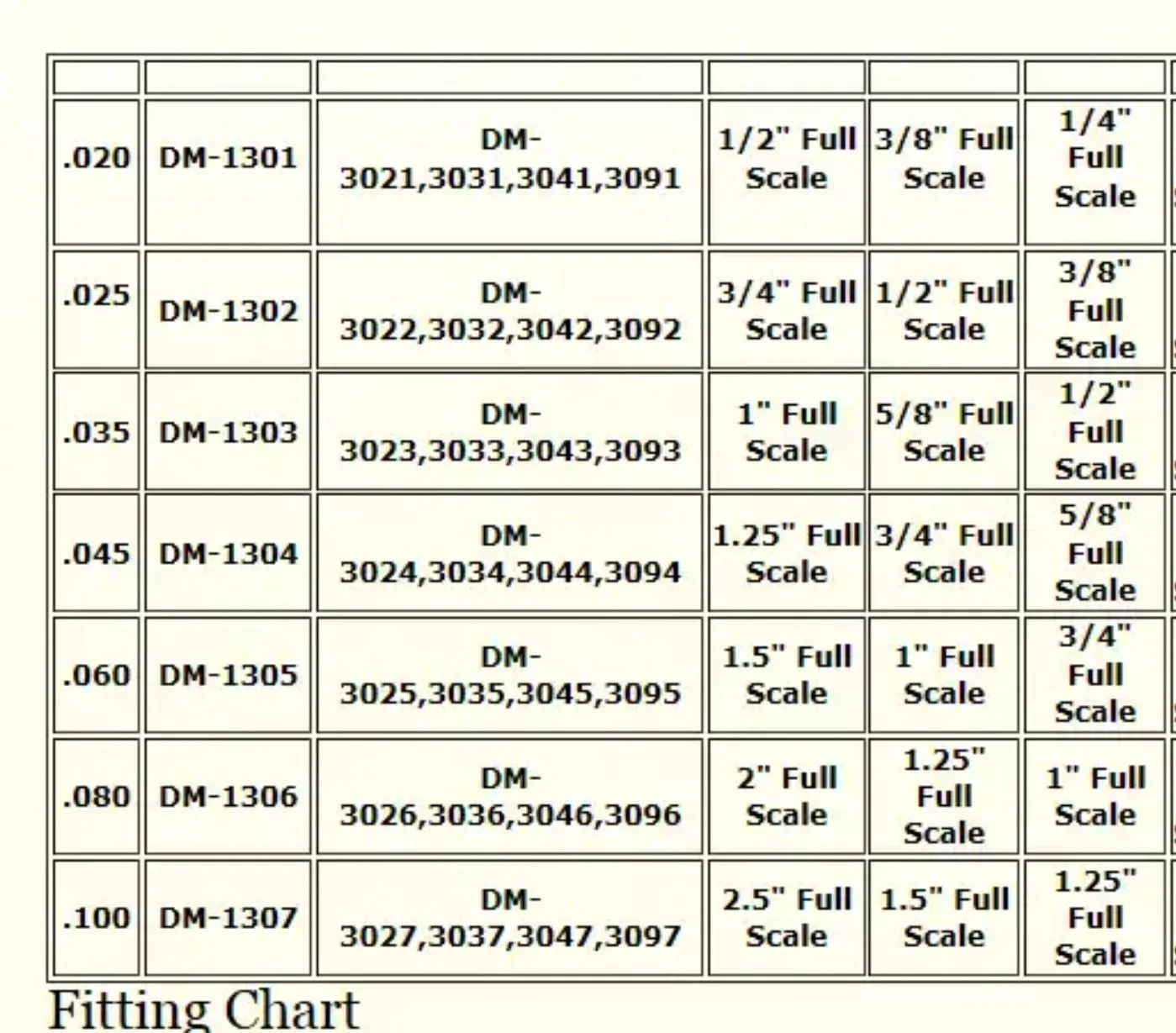
Choosing the right scale for your diecast car collection is a personal decision. There are several factors to consider to ensure that your choice aligns with your collecting goals and preferences. Understanding these factors will help you make the best decision for your needs. The considerations range from practical matters like space availability to personal preferences regarding detail and the type of cars you want to collect.
Space Availability
The amount of space you have available is a crucial factor when deciding on a diecast car scale. Larger scales, such as 1 18, require more display space than smaller scales like 1 64. If you have limited space, you may prefer to collect smaller-scale models to maximize the number of cars you can display. Consider the available shelf space, display cabinets, or any other area you plan to use for your collection. Think about how you want to organize your collection and whether you have room to accommodate models of different sizes. Careful planning will help you avoid the disappointment of running out of display space.
Collecting Preferences
Your personal collecting preferences play a significant role in determining the best scale for you. Some collectors prioritize detail, preferring the larger scales that allow for more intricate features. Others may focus on collecting a wide variety of vehicles, in which case a smaller scale may be more suitable. Consider what types of cars you are most interested in collecting. Are you focused on classic cars, modern sports cars, race cars, or trucks? The availability of models in the scale you choose can vary depending on the type of vehicle. Consider what appeals to you the most and make your decision based on that.
Budget Considerations
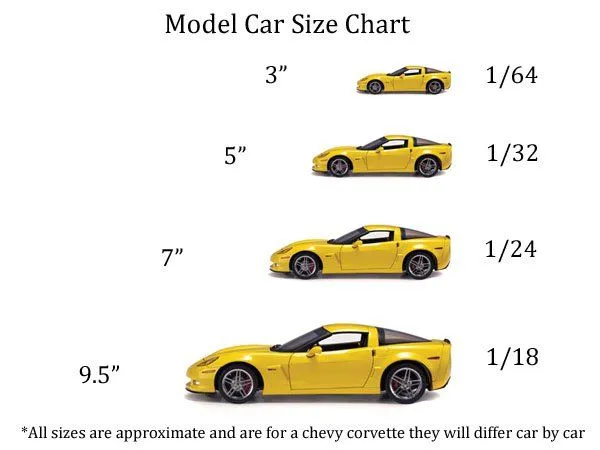
The cost of diecast cars varies depending on the scale and the level of detail. Larger scale models, such as 1 18, tend to be more expensive due to the greater complexity and materials used in their construction. Smaller scales, such as 1 64, are often more affordable, which can make it easier to build a large collection on a budget. Set a budget for your collecting hobby and consider how much you are willing to spend on each model. The scale you choose should fit within your financial constraints, allowing you to build a collection that brings you joy without straining your finances.
Benefits of Using a Scale Chart
Using a diecast car scale chart provides several advantages for collectors. It helps you understand the actual size of the model car, allowing you to plan your display and compare models. It ensures that the models in your collection are consistent in size, making your collection more visually appealing and organized. The chart also helps in determining the model’s dimensions, helping you visualize how much space the model will take up. This tool is essential for both new and experienced collectors.
Finding and Using a Scale Chart
Scale charts are readily available in various formats, making them easily accessible for all collectors. Whether you prefer online resources or physical printouts, you can find the information you need to navigate the world of diecast car scales effectively. Understanding how to use a scale chart is as essential as having one, and knowing where to find these charts can significantly improve your collecting experience.
Online Scale Charts
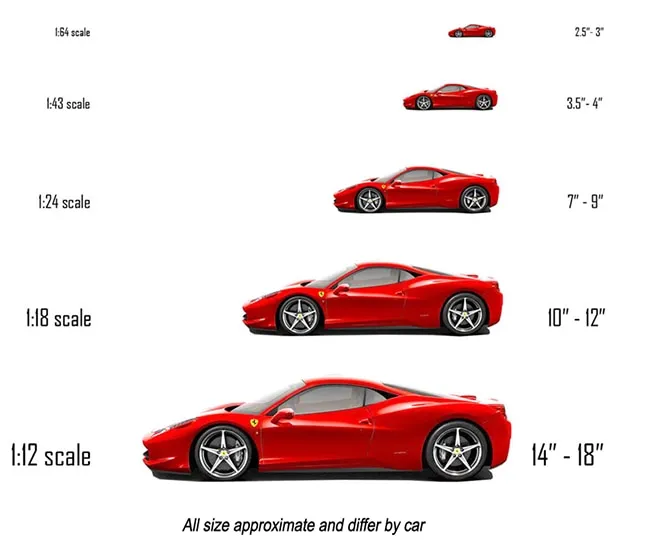
Numerous websites and online resources offer scale charts and conversion tools. These charts often provide detailed information about different scales, along with examples of model sizes and dimensions. Many online resources allow you to input the scale and the dimensions of the real car to calculate the size of the model. These are readily available, frequently updated, and easy to access from any device with internet access. Look for interactive tools that allow you to experiment with different scales and compare model sizes. Image: diecast scale chart online.
Printable Scale Charts
Printable scale charts offer a tangible and convenient way to reference scale information. These charts can be downloaded and printed at home or at a local print shop. A printed chart allows you to have the information readily available, even when you are not connected to the internet. You can keep a printed chart in your collecting area for quick access. These charts are beneficial for comparing model sizes and planning your display layout. Make sure to keep them in a safe place where they can be easily referenced.
Scale Chart Resources and Tools
Several resources and tools can help you understand and use diecast car scale charts effectively. Websites, online forums, and collecting communities provide valuable information, tips, and recommendations for scale charts and related tools. Understanding these resources can help you enhance your collecting experience and make informed decisions about your collection. Consider joining collecting communities, both online and in person. These can provide valuable resources and help you grow your collection.
Scale Chart for Popular Car Models
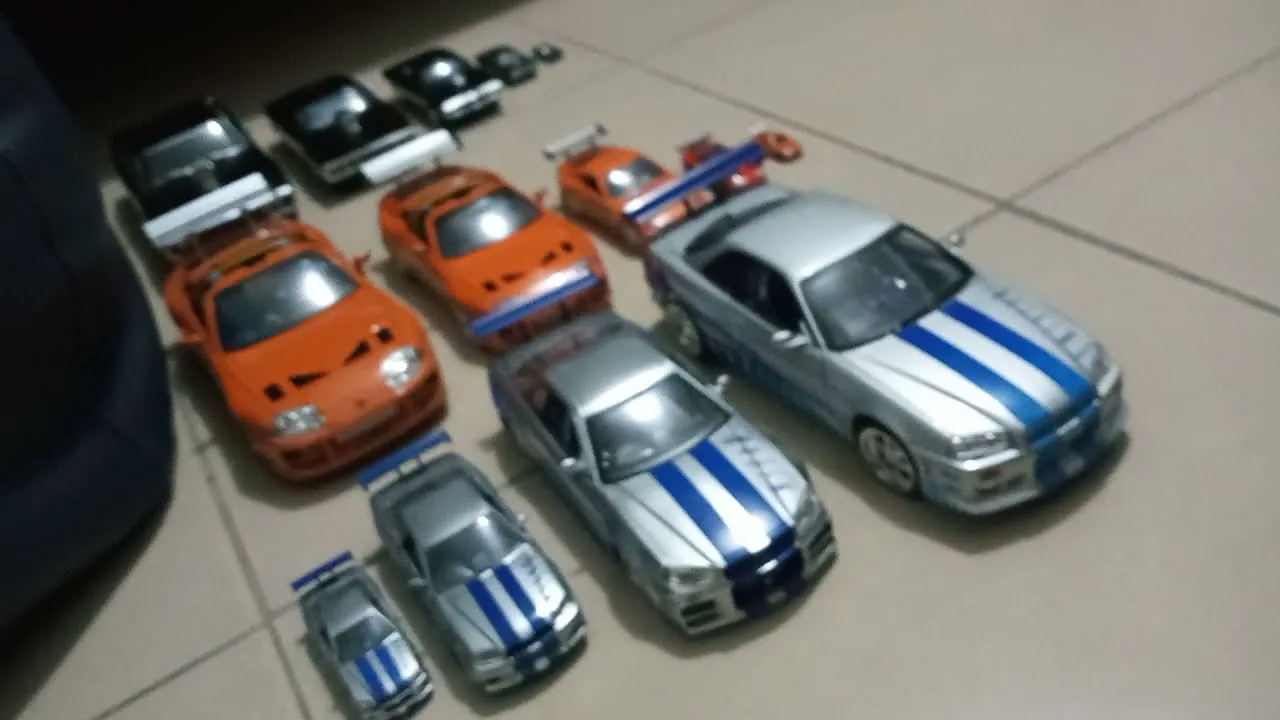
Diecast car scale charts often include information about specific car models. This can be useful for collectors who focus on a particular type of car or who want to know the dimensions of a model before purchasing. Check the scale chart for the model information. Having a scale chart is an important part of the collecting process. Image: diecast popular models.
Understanding and utilizing a diecast car scale chart is crucial for any serious collector. The chart provides essential information about scale, size, and dimensions, allowing collectors to make informed decisions about the models they collect. Whether you are interested in 1 64 scale, 1 43, 1 24, or 1 18, a scale chart can guide you. By following the tips and information in this guide, you’ll be well-equipped to build a satisfying and well-organized diecast car collection.
